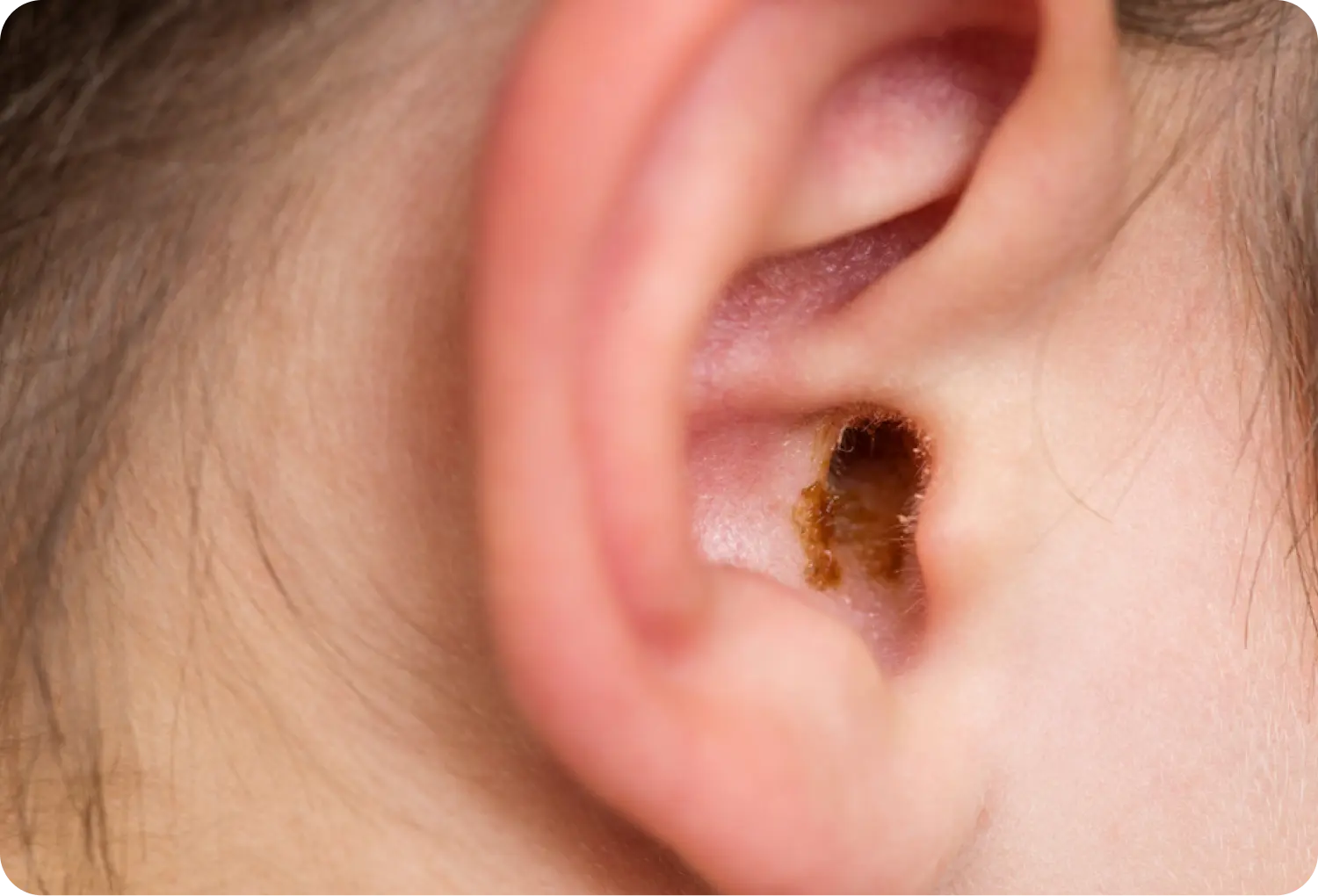Ear wax

Earwax protects the ear by trapping dust and debris. It usually clears out naturally, but excessive buildup may require removal with drops or professional care. Avoid inserting objects, as this can push wax deeper.
Ear wax
The Outer Ear and Ear Canal
The outer ear is the funnel-like pan of the ear you can see on the side of the head, plus the ear canal (the hole which leads down to the eardrum). The ear canal is shaped somewhat like an hourglass narrowing part way down. The skin of the outer part of the canal has special glands that produce earwax. This wax is supposed to trap dust and sand particles to keep them from reaching the ear-drum. Usually the wax accumulates a bit, and then dries up and comes tumbling out of the ear, carrying sand and dust with it. Or it may slowly migrate to the outside where it is wiped off.
Should You Clean Your Ears?
Wax is not formed in the deep part of the ear canal near the eardrum, but only in the outer part of the canal. So when a patient has wax blocked up against the eardrum, it is often because he has been probing their ear with such things as cotton tipped applicators, bobby pins or twisted napkin corners. Such objects only serve as ram rods to push the wax in deeper. Also, the skin of the ear canal and the eardrum is very thin and fragile and is easily injured. Earwax is healthy in normal amounts and serves to coat the skin of the ear canal where it acts as a temporary water repellent. The absence of earwax may result in dry, itchy ears.
Most of the time the ear canals are self cleaning, that is, there is a slow and orderly migration of ear canal skin from the ear drum to the ear opening. Old earwax is constantly being transported from the ear canal to the ear opening where it usually dries, flakes, and falls out. Under ideal circumstances, you should never have to clean your ear canals. However, we all know that this isn’t always so.
When wax has accumulated so much that it blocks the ear canal (and hearing), your physician may have to wash it out, vacuum it, or remove it with special instruments. Or he may prescribe ear drops which are designed to soften the wax. If so, you may first wish to try over the counter products such as Waxsol, Ear Clear drops, Deborox ear drops. These are not as strong as the prescription wax softeners but are effective for many patients. In the event that the non-prescription product is not satisfactory, a surgeon should be consulted.
You must know that you do not have a hole (perforation or puncture) in your ear drum. Puffing the above ear drop products in your ear in the presence of an eardrum perforation may cause an infection. Certainly, washing water through such a hole would surely start up an infection. If you are uncertain whether you have a hole in your eardrum, consult your surgeon.
You may soften the wax for a few days by instilling several drops of an earwax softener into the ear canal twice a day. This can be purchased in your pharmacy without a prescription. If your ear still feels blocked after using the ear drops, you should consult your surgeon, who may elect to wash it out.

Example of Ear Wax
Murali Mahadevan
Specialist ENT Surgeon
For all enquiries and appointments call (09) 925 4050
Suite A, Level 1, Kakariki Hospital
9 Marewa Road
Greenlane, Auckland 1051
Facsimile: (09) 925 4051
Only general information is provided on this web site and is not intended as advice or a consultation. Please read our full disclaimer.

If you're experiencing these symptoms, it's recommended to consult a healthcare professional for proper diagnosis and treatment.
FAQs
Earwax can accumulate due to excessive production, narrow ear canals, or improper cleaning with cotton swabs.
No, using swabs can push wax deeper, leading to blockages or infections.
Use over-the-counter ear drops to soften wax, or consult a doctor for professional removal.
Yes, excessive buildup can block the ear canal, affecting hearing temporarily.
If you experience pain, hearing loss, ringing in the ears, or persistent blockage despite home treatment.
Yes, trapped wax can cause discomfort, irritation, and even infections if not managed properly.
Contact Us
Get in touch to book an appointment or inquire about our ENT services. Our team is here to assist you with expert care and guidance.
Ph: +64 9 925 4050
Fax: +64 9 925 4051
Dr Murali Mahadevan FRACS
Otolaryngology Associates Ltd
Suite A, Level 1, Kakariki Hospital
9 Marewa Road
Greenlane, Auckland 1051

